To have a better understanding of what type of player each team is drafting, NBA scouting departments will often break down names into different positions.
But there are now more specific roles for players to occupy, outside of the traditional five. Offenses run through primary ball-handlers. Secondary combo guards play on and off the ball. Traditional shooting guards are used more to score than play-make. Small forwards aren’t creative enough to be guards or big enough to defend bigs or rebound.
Interchangeable wings can play play the 2 or 3 with some mix of creation, shooting and defense. Combo forwards have size and perimeter skill. Hybrid 4s are bigs who aren’t skilled or quick enough defensively to play the wing, but they can still handle or shoot with size.
And bigs can play the 4 or 5, but not the 3.
Here is our last top-50 big board, though slight changes were made, specifically after a recent rise into the top 30 by Auburn’s JT Thor.
Primary Ball-Handler
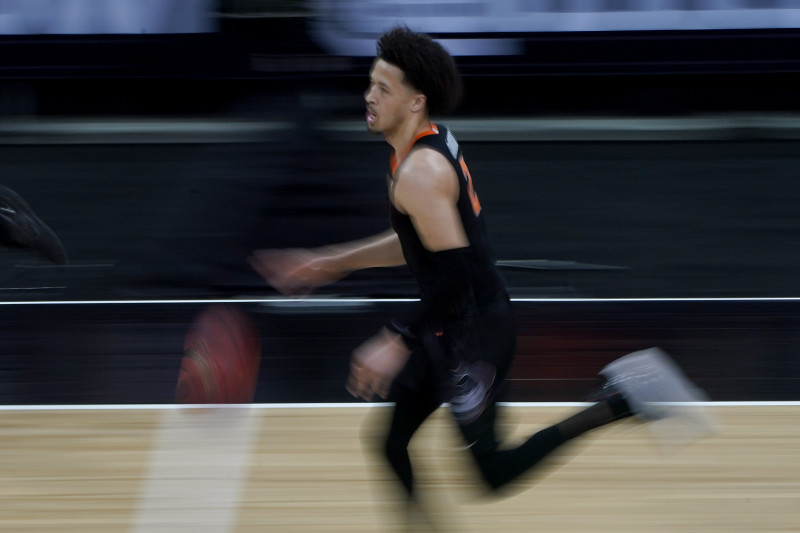
Examples: Luka Doncic, Damian Lillard, Rajon Rondo
5. Sharife Cooper (Auburn, Freshman, No. 23 overall prospect)
No prospect in the draft registered a higher assist rate than Cooper, whose ball-handling, shiftiness, speed, passing skills and vision will surely translate to NBA playmaking. A 51.9 true shooting percentage highlights the trouble he had efficiently scoring at 6’1″ and making jump shots. But even a worst-case Cooper should hold rotational value for his ability to put pressure on defenses with his breakdown penetration and create open looks for teammates.
4. Tre Mann (Florida, Sophomore, No. 17 overall prospect)
Mann should be viewed as a primary ball-handler based on his creation skill and the fact that he wasn’t nearly as comfortable off the ball. The big question is whether he’s an advanced enough playmaker to start at point guard or if his score-first game is better suited off the bench. Regardless, he’ll carve out a regular NBA role with his ability to create and shoot off the dribble with a tough pull-up game and an elite floater.
3. Josh Giddey (Adelaide 36ers, 2002, No. 10 overall prospect)
Depending on what team Giddey goes to, he may wind up splitting ball-handling duties. But offense should run through his decision-making, passing and IQ. At 6’8″, he doesn’t require blow-by speed to make plays as a shot-maker, finisher or distributor. Giddey will never lead his team in scoring, but the NBL’s assist leader figures to have a long, Ricky Rubio-like career as a reliable facilitator who helps run efficient offense.
2. Jalen Suggs (Gonzaga, Freshman, No. 4 overall prospect)
Whichever team drafts Suggs should make it a priority to quickly find him with an outlet pass to initiate transition. He’s most effective in the open floor with his speed, strength and passing. He’ll need to work on his handle for creation in the half court, but teams will still see a franchise lead guard with an ability to get downhill, set up teammates, shoot off the dribble (39.7 percent), use the floater (9-of-14) and force turnovers on defense.
1. Cade Cunningham (Oklahoma State, Freshman, No. 1 overall prospect)
At 6’8″, 220 pounds, Cade Cunningham isn’t a traditional point guard. But he’s too advanced on the ball to play him off of it. Offense needs to run through his creation, playmaking and shot-making skill, the way it does through Luka Doncic. Aside from being the best isolation scorer in the class (87th percentile), Cunningham is an outstanding passer who controls pace.
Secondary Combo Guard
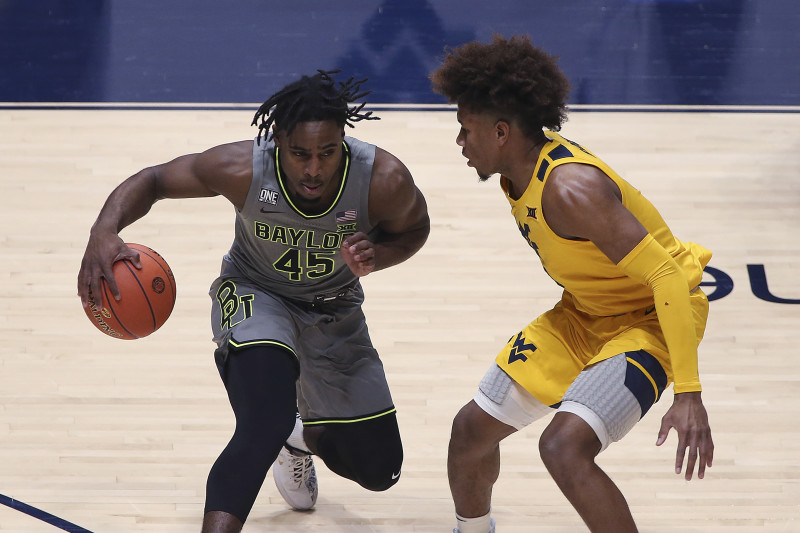
Secondary combo guard: Fred VanVleet, De’Anthony Melton, Terry Rozier
5. Joel Ayayi (Gonzaga, Junior, No. 33 overall prospect)
Ayayi’s fit remains more attractive than his upside. Limited speed and burst raise questions about his potential as a creator, but he ranked in the 99th percentile on 66 pick-and-roll ball-handler possessions, and he shot well off the catch (40.5 percent), dribble (41.5 percent) and floater (6-of-12). He looks like a plug-and-play reserve who can add backcourt depth on a rookie contract.
4. Jaden Springer (Tennessee, Freshman, No. 20 overall prospect)
Concerns over explosion and shiftiness suggest Springer is suited for secondary ball-handling duties. He’s better off at the 2, where he can mix in more spot-up possessions, an area he excels in because of his catch-and-shoot jumper, decision-making and body for line-drive slashing. Still, Springer did flash creation potential and passing skill on enough possessions to feel optimistic that he’ll make plays in space or off ball screens.
3. Miles McBride (West Virginia, Sophomore, No. 19 overall prospect)
Teams should see a guard who can put pressure on opponents with his open-floor speed, confident pull-up package (54 makes, 29 games) and pestering defense. He lacks some degree of point guard feel as a passer and decision-maker, but McBride plays a lively game that should be suited for some kind of scoring ball-handler/energy role.
2. Jared Butler (Baylor, Junior, No. 18 overall prospect)
There is still room for Butler’s growth as a passer, but the improvement of his off-ball skills makes it easier to project an NBA fit. Ranked in the 98th percentile out of spot-ups, Butler shot 51.1 percent off the catch and showed more scoring versatility with the pull-up and floater. He may wind up more like an Immanuel Quickley type of offensive specialist, but the tight handle and skill level should be enough for secondary playmaking as well.
1. Davion Mitchell (Baylor, Junior, No. 14 overall prospect)
Mitchell projects better as a high-usage secondary ball-handler and scorer—not a lead decision-maker. I’m picturing more of a Fred VanVleet type who can play stretches of a game from the point but could also use a more natural floor general alongside him. Regardless, a convincing mix of explosiveness off hesitations, improved footwork for self-creation, shot-making skill and hounding defense has made it difficult to keep pointing at and worrying about his age (22).
Traditional Shooting Guard
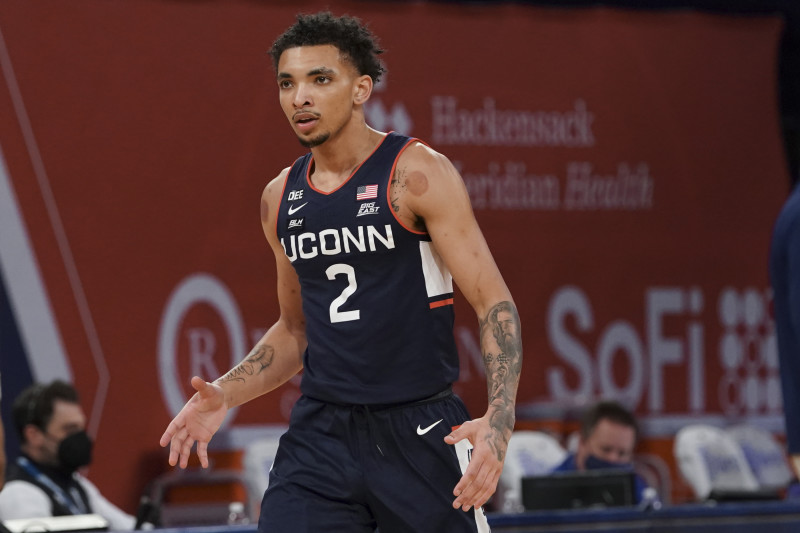
Examples: Zach LaVine, Lou Williams, Malik Monk
5. Nah’Shon Hyland (VCU, Sophomore, No. 44 overall prospect)
Creativity, shooting and positional length should help Hyland find success as a scoring guard. He’ll need a role that values his tough shot-making in streaks and accepts his limited playmaking and presumed inefficiency inside the arc.
4. Cameron Thomas (LSU, Freshman, No. 30 overall prospect)
Thomas may never again have the green light to register 31.6 percent usage, but the right NBA role should value his ability to create space, shoot off dribbles, spot-ups and screens and score in bunches. A lack of playmaking and defense just hurts Thomas’ chances of playing starter minutes.
3. Chris Duarte (Oregon, Senior, No. 24 overall prospect)
At some point in the first round, Duarte’s age becomes less of a turnoff. The 23-year-old shooting guard just shot 63.1 percent inside the arc, 42.4 percent from three and 81.0 percent from the free-throw line while registering an outstanding 3.4 steal percentage. It’s worth questioning his window to improve from here, but based on his efficient execution as a self-creator into jumpers, downhill driver past ball screens, versatile shooter and tough defender, teams should see a useful rotation player for 2021-22.
2. James Bouknight (Connecticut, Sophomore, No. 12 overall prospect)
Bouknight didn’t improve as a playmaker, but he averaged 18.7 points, showcasing creation skill, shot-making, off-ball movement and athletic finishing that hint at a well-rounded NBA scorer. His efficiency, particularly with a three-ball that was inconsistent at Connecticut, should determine whether he’s a stud, starting 2-guard or more of reserve scorer.
1. Jalen Green (G League Ignite, 2002, No. 2 overall prospect)
Having already seen Green average 17.9 points in the G League bubble, before he put up 30 points during his lone playoff game, it’s become easy to picture a special NBA scorer. Aside from the fact that he’ll enter the league as one of its top athletes, Green’s skill development has looked sharp. Now an advanced self-creator with tight handle and footwork, he’s also a convincing shot-maker off the dribble. Teams will still want to play him alongside a more traditional playmaker, however, as his strengths and focus will revolve around isolation and ball-screen scoring.
Traditional Small Forward
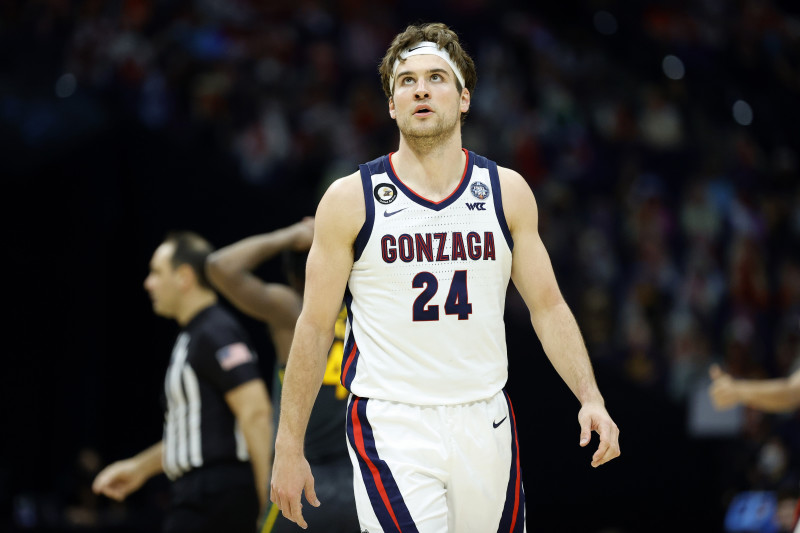
Examples: Doug McDermott, Brandon Ingram, Mikal Bridges
5. Johnny Juzang (UCLA, Sophomore, No. 49 overall prospect)
Dangerous shot-making could be enough for Juzang to stick without many ancillary strengths. At 6’6″, he hit 60 pull-ups in 27 games at a 47.2 percent clip, and he converted at least 20 field goals out off isolation, pick-and-roll sets and screens. He’ll still spend most of his time spotting up and escape-dribbling into jumpers without putting much pressure on the rim.
4. Terrence Shannon Jr. (Texas Tech, Sophomore, No. 40 overall prospect)
Shannon’s explosiveness and quickness for a 6’6″ wing always pop first. It may be difficult to use him at a guard spot, given his limited playmaking and creation skills. But if he can become just an average three-point shooter, he should have enough to offer a rotation with his scoring and perimeter defense.
3. Herbert Jones (Alabama, Senior, No. 37 overall prospect)
Jones will need the right fit that can mask his scoring limitations and optimize his versatility. Defense will always come first on the scouting report, but he made impressive strides as a playmaker and passer. And that’s made gambling on his shooting development more enticing.
2. Brandon Boston Jr. (Kentucky, Freshman, No. 34 overall prospect)
If you’d never seen Boston until this season, it may be tough to understand the initial appeal. I’m still leaving the door open to the possibility that a cold-shooting start snowballed into low confidence that affected him all year. But he did shoot 42.0 percent from three over his last 10 games, and he’s still an intriguing buy-low pick in the second round for his creation and shot-making skill set as a 6’7″ wing.
1. Corey Kispert (Gonzaga, Senior, No. 21 overall prospect)
Teams are drafting Corey Kispert for his shooting. But there is more to the game of the NCAA’s leader in transition points per possession. At 6’7″, 220 pounds, he’s strong going downhill, and he’s a sound passer as a pick-and-roll ball-handler. Kispert won’t add off-the-dribble scoring in the half court, and his defense is unlikely to ever be a plus. But every year, the NBA playoffs remind teams about the value of low-cost shooters. Anything else with Kispert is bonus
Interchangeable Wings
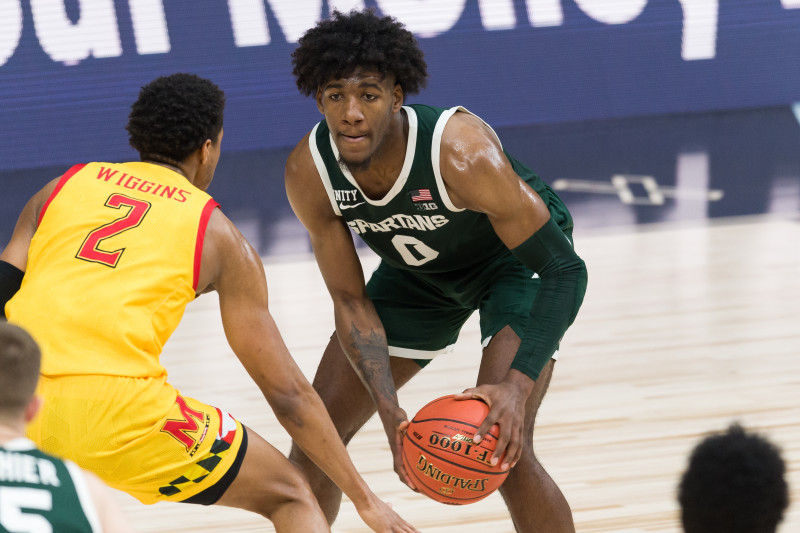
Examples: Khris Middleton, Norman Powell, Devin Vassell
5. Ziaire Williams (Stanford, Freshman, No. 32 overall prospect)
There will be teams willing to overlook Williams’ 37.4 field-goal mark. It’s still worth betting on his picturesque jumper being better than the numbers of a 20-game sample size at 19 years old. For a 6’8″ wing, the eye test sees a clean stroke off the catch or dribble. And he showed he can handle and make plays off ball screens. Given his age, shooting potential, ball skill and defensive tools, taking him in the first round remains reasonable. But concerns over his ability to penetrate and play through contact are fair.
4. Josh Christopher (Arizona State, Freshman, No. 27 overall prospect)
It’s easy to picture Christopher’s speed, explosion, shot-creation and shot-making translating to scoring. He’s a limited playmaker for others, so it may be nice to have multiple passers on the floor with him. But Christopher should have a good chance to thrive in an instant-offense or sixth-man role at some point in his career. It wouldn’t be surprising if it takes years for his shooting and feel for scoring within the team’s offense to improve.
3. Aaron Henry (Michigan State, No. 16 overall prospect)
Henry checks certain role-player boxes pretty convincingly. His defensive anticipation and tools for guarding different spots frequently popped. And though his shooting has been slower to come around, his strength for slashing and one-handed touch for floaters should translate. And he continued to deliver more signs of playmaking and post-scoring improvement.
2. Moses Moody (Arkansas, Freshman, No. 11 overall prospect)
At 6’6″, 205 pounds, Moody should be interchangeable with his size and advanced jumper. His team may want to have two more creative guards in the lineup, since Moody is more of an off-ball scorer than a playmaker. But he should also fit in anywhere based on his shot-making versatility and knack for finding opportunities within an offensive set.
1. Keon Johnson (Tennessee, Freshman, No. 7 overall prospect)
There won’t be a difference between the 2 and 3 spots when Johnson is on the floor. He’s not creative or lethal enough from three to label a full-time guard. But he’s a dangerous slasher/cutter who can still play-make off the dribble, and he’s added some encouraging post shots and pull-ups to his repertoire. With a strong frame and relentless defensive motor, Johnson should also be up to guarding both wing positions.
Combo Forward
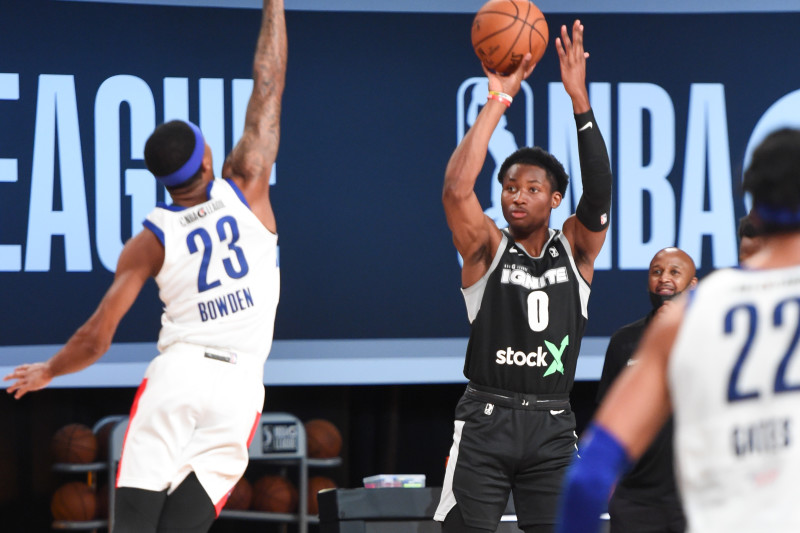
Examples: Marcus Morris, Gordon Hayward, De’Andre Hunter
5. RaiQuan Gray (Florida State, Junior, No. 50 overall prospect)
With a face-up skill set for a 6’8″, 260-pound forward, Gray has teams intrigued by his potential to out-physical wings, make plays off the dribble and guard either forward position. Limited signs of shooting touch are problematic, but the appeal to Gray stems from the idea that he can defy traditional scouting laws with his unusual strength and versatility.
4. Trey Murphy III (Virginia, Junior, No. 35 overall prospect)
Murphy’s NBA role should be well-defined from day one. He’ll make a career out of spotting up from three, finishing at the rim and guarding both forward spots. Murphy won’t offer much off the dribble, but for the right team that could covet the specific services of a stretch forward, Murphy can be an immediate, low-cost contributor.
3. Kessler Edwards (Pepperdine, Junior, No. 28 overall prospect)
Edwards could give wings and power forwards problems with his 6’8″ size, perimeter shot-making and defensive tools/IQ. Through three years at Pepperdine, he shot 39.5 percent from three while gradually expanding his scoring versatility, particularly from the post.
2. Franz Wagner (Michigan, Sophomore, No. 9 overall prospect)
At 6’9″, 220 pounds, Wagner possesses mismatch size for a shooting, slashing and live-dribble passing wing. He isn’t the most creative, but as a spot-up threat who can attack closeouts, play-make off ball screens and guard both forward spots, Wagner’s versatility is perfectly suited for the NBA’s 3 and 4 positions.
1. Jonathan Kuminga (G League Ignite, 2002, No. 5 overall prospect)
Physical, athletic and skilled, Kuminga can torch bigs with his slashing and off-the-dribble scoring. And traditional wings will have trouble contesting against his 6’6″, 210-pound frame on drives and post-ups. He’ll just need to improve his shooting and awareness to maximize the star potential tied to his tools, speed, creation and shot-making.
Hybrid/Face-Up 4s

Examples: Pascal Siakam, Thaddeus Young, Draymond Green
5. Roko Prkacin (Cibona, 2002, No. 31 overall prospect)
Scouts have been waiting for Prkacin’s draft-eligible year. With three-point range and the ball-handling skill to make plays off the dribble, his scoring versatility is suited for the NBA 4 position. He’s not a high-level creator or rebounder, and his defensive ceiling feels limited, but Prkacin fits today’s game as a stretch, playmaking 4.
4. JT Thor (Auburn, Freshman, No. 29 overall prospect)
Despite Thor’s limited production at Auburn, buzz is building during workout season around his shooting stroke and shot-making versatility for a 6’10” forward. He only shot 29.7 percent from three and weighs 205 pounds, but at 19 years old with range on his jumper, an ability to fire off dribbles/fallaways or drive past his man creates an enticing potential trajectory for Thor.
3. Kai Jones (Texas, Sophomore, No. 22 overall prospect)
Enticing flashes of shooting, drives past closeouts and highlight blocks bumped Jones into the lottery discussion. They didn’t happen often, which is why it’s more realistic to just bank on his athleticism, movement and motor for easy baskets and defensive versatility. But if this year’s skill improvement was a sign of gradual growth moving forward, Jones could wind up evolving into a face-up scoring 4 who can guard the perimeter.
2. Scottie Barnes (Florida State, Freshman, No. 8 overall prospect)
Barnes has become an outlier NBA teams want to bet on. There is an obvious case against his lack of self-creation and shooting touch. But at 6’9″, 227 pounds, his passing and defensive versatility are sure to translate, and with ball-handling skills and tremendous finishing length, he should still find ways to score on face-ups in space and one-handers around the key.
1. Jalen Johnson (North Carolina, Freshman, No. 6 overall prospect)
Though Johnson gave teams more reasons to question him than move him up the board, there is still too much potential attached to his open-floor handle and passing on the move for an athletic, 6’9″, 220-pound finisher and versatile defender. He shouldn’t need a reliable jumper to consistently make plays and earn easy baskets, but improving his jump shot could be a swing skill to unlock star-caliber upside.
Bigs
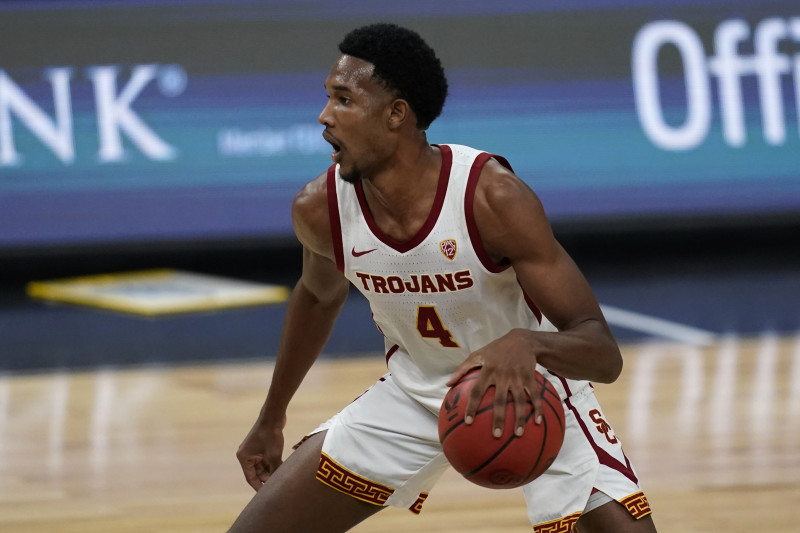
Examples: Bam Adebayo, Domantas Sabonis, Richaun Holmes)
5. Day’Ron Sharpe (UNC, Freshman, No. 26 overall prospect)
Unique passing skills play a role in Sharpe’s first-round grade. They give him a valued speciality skill to complement his offensive rebounding and defensive movement. Sharpe doesn’t offer much scoring potential, but his high activity level (19.8 points, 15.8 boards, 3.0 assists per 40 minutes) should translate based on his 265-pound frame, motor, nose for the ball and passing IQ.
4. Usman Garuba (Real Madrid, 2002, No. 25 overall prospect)
Garuba has built a convincing case around his defensive potential on the strength of his experience causing problems for Euroleague offenses with 6’8″, 220-pound size and outstanding IQ/anticipation. The big question is what to make of his scoring limitations and occasional flashes of shooting. The most realistic projection depicts a high-energy big who’ll make his impact and money with winning defensive and hustle plays and capitalizing at an efficient rate offensively as a fifth option who only takes high-percentage shots.
3. Alperen Sengun (Besiktas, 2002, No. 15 overall prospect)
Historic production (for a teenager overseas) and an MVP trophy in Turkey have made it difficult to continue harping on older-school post-up offense. He happens to be unusually effective at it with his footwork, touch and timing inside. But late-season flashes of shooting and ball-handling into face-up baskets have led to some optimism about his potential evolution into a more modern big man. And though his results defensively were mixed, the highlights of smart reads and fearless blocks outweigh the lowlights of limited switchability.
2. Isaiah Jackson (Kentucky, Freshman, No. 12 overall prospect)
Taking Jackson in the lottery means banking on offensive skill that was masked in a limited role at Kentucky. He’ll earn minutes just by sprinting up the floor, finishing high above the rim and blocking shots. He’s still raw skill-wise in terms of creating his own shot. But Jackson flashed enough touch and face-up moves to suggest there is more scoring upside to unlock from a surefire defensive asset.
1. Evan Mobley (USC, Freshman, No. 3 overall prospect)
Elite defensive potential and a modernized skill set result in a top-three draft case for Mobley. His shot-blocking and movement to guard away from the basket seem sure to translate. And he demonstrated plenty of shooting touch, ball-handling skill for face-up scoring and passing to continue making offensive plays outside of easy finishes. The only question is how much his skinny frame holds him back from playing after contact or containing physical bigs.
Stats courtesy of Synergy Sports and Sports Reference.
Credit: Source link